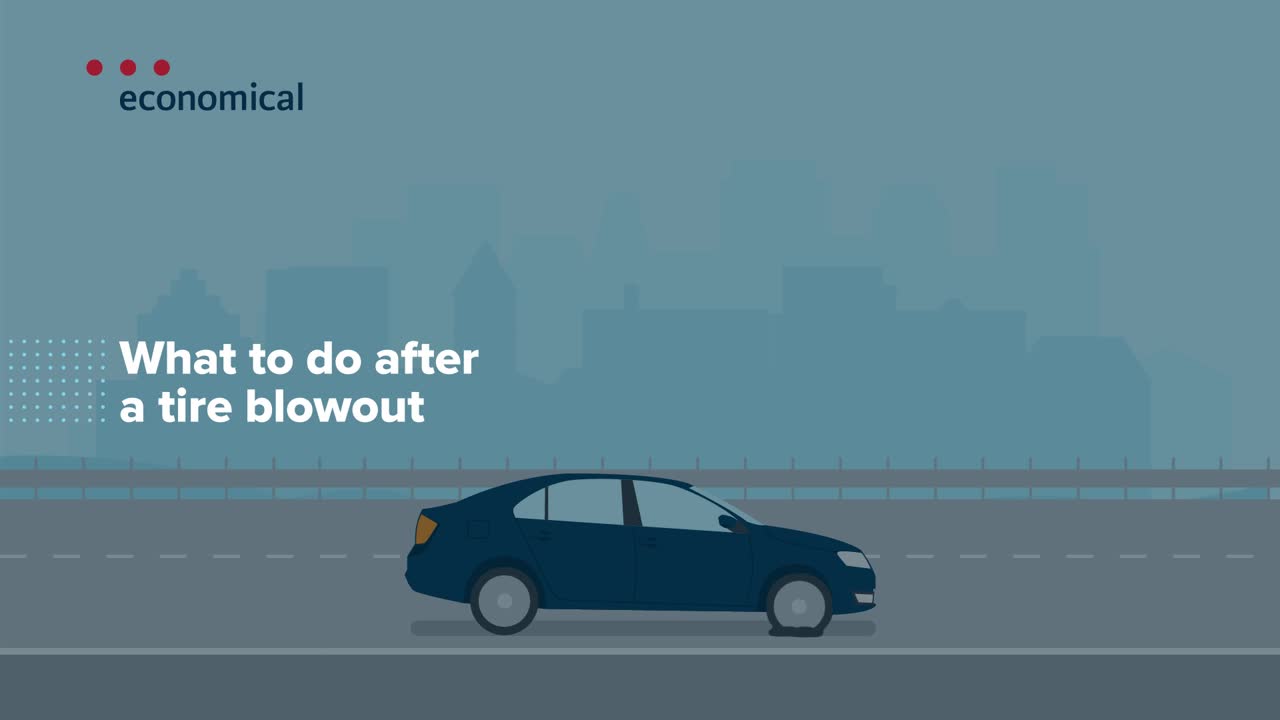Whether you’re on a fast-moving highway on your way to work or cruising the back roads on the way to the cottage, a tire blowout can come as quite a surprise. Not only will it put a damper on your plans and delay your arrival time, but it could also cause damage to your vehicle or even lead to a collision.
The good news is that tire blowouts can usually be prevented by sticking with the manufacturer’s tire pressure recommendations, maintaining a reasonable speed, and avoiding overloading your vehicle with extremely heavy items or towing an overloaded trailer. But tire blowouts can’t always be avoided, so it’s best to understand what a blowout sounds and feels like, as well as the steps you can take to avoid a collision and prevent damage to your vehicle if you should ever experience one.
What does a tire blowout sound like?
When your tire bursts, you’ll likely hear a boom, bang, or pop. Sometimes the sound of the tire bursting is so loud that it echoes through your entire vehicle. Then, you might hear a whoosh, which is the sound of all the air quickly leaving the blown tire. And finally: flip, flap, flop…the sound of the deflated tire hitting the road as your car continues moving.
What does a tire blowout feel like?
If you’re driving fast when your tire bursts, you’ll probably feel your car start to slow down and pull strongly to the right or left, depending on which tire has blown. If a rear tire has blown, you’ll probably feel some pressure further back in your vehicle’s body. If a front tire has blown, you’ll feel more pressure in the front end as you try to steer straight ahead.
What should I do after a tire blowout?
It only takes a split second for your tire to burst, and you should be ready to react quickly to prevent a collision or damage to your vehicle. When your tire bursts, it’s easy to feel like you’re losing control of your car — but try not to panic. Instead, keep calm and follow these steps:

Help other drivers stay safe in the event of a tire blowout by sharing this video on Facebook or Twitter now.
Let’s break it down in a little more detail. In the event of a tire blowout:
- Don’t slam on the brakes or turn your steering wheel in either direction — both of these actions can cause you to spin out of control. Instead, briefly put your foot on the gas to regain control and keep your car moving straight ahead. The drag of the burst tire will prevent you from picking up speed, but a brief attempt to accelerate will help you stay in your lane and keep your foot off the brake pedal.
- Once your vehicle is stabilized in your lane, slowly and gradually release your foot from the gas pedal and allow your car to slow down on its own.
- Next, turn on your signal and allow your vehicle to safely ease off to the side of the road without any hard steering or slamming on the brakes.
- Once you’ve come to a stop, turn on your hazard lights.
- Only get out of your vehicle if you’ve pulled over to a safe location. If you know how to replace your own tire and can do so safely, go for it — but remember that a spare tire is usually intended to travel shorter distances and at lower speeds.
- If it’s not safe to get out of your car or you aren’t able to replace the tire on your own, stay inside and call your roadside assistance provider or a tow truck. If there’s nowhere to safely pull over and you’re blocking a live lane of traffic, call 911 so the police can come assist you.
Sometimes an accident happens, even when you’ve done your best to prevent it. Reach out to your group’s licensed insurance broker to find out how your car insurance policy has you covered in the event of a blowout-related collision.
Share these tips on Facebook or Twitter to help your friends stay safe on the road, too.